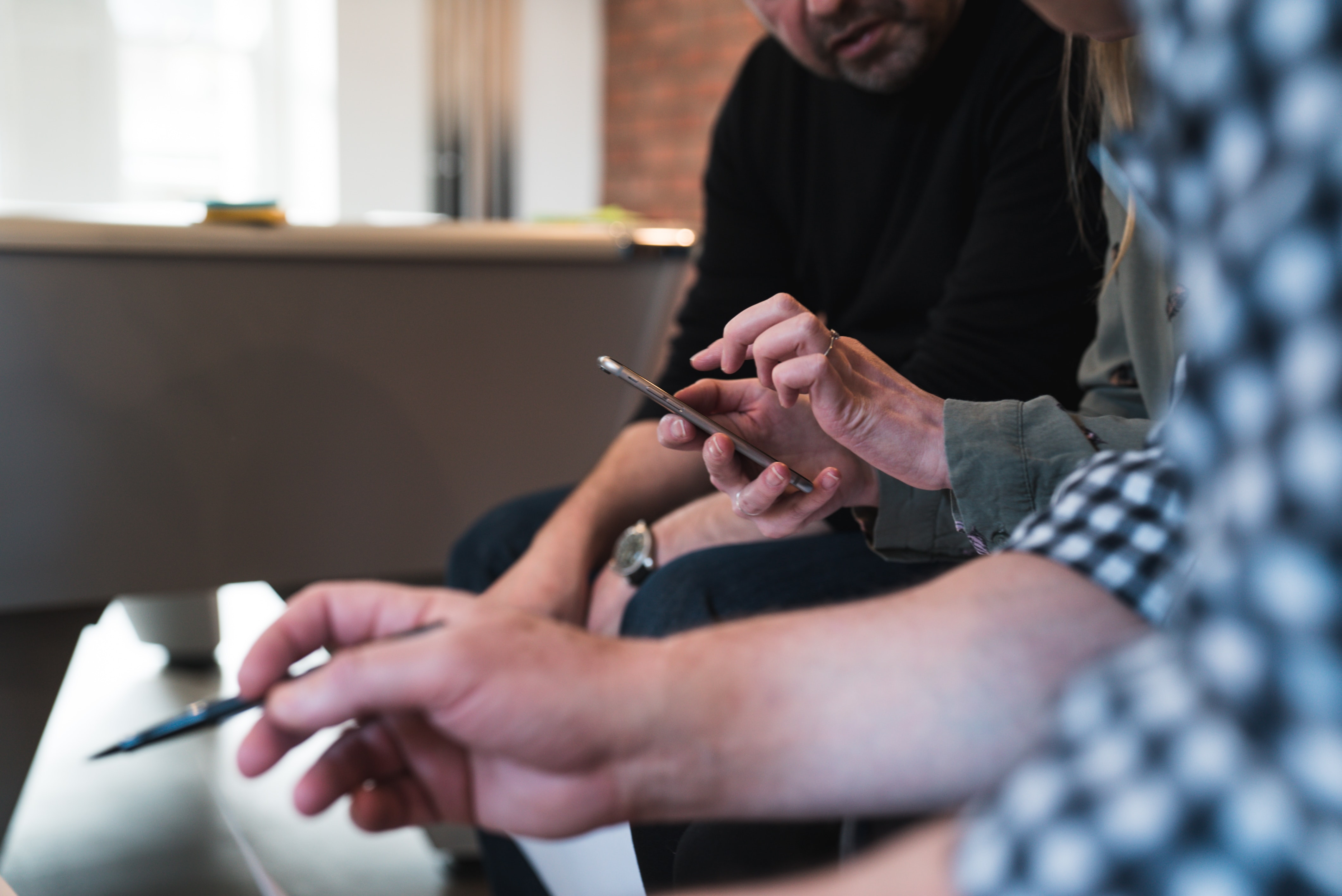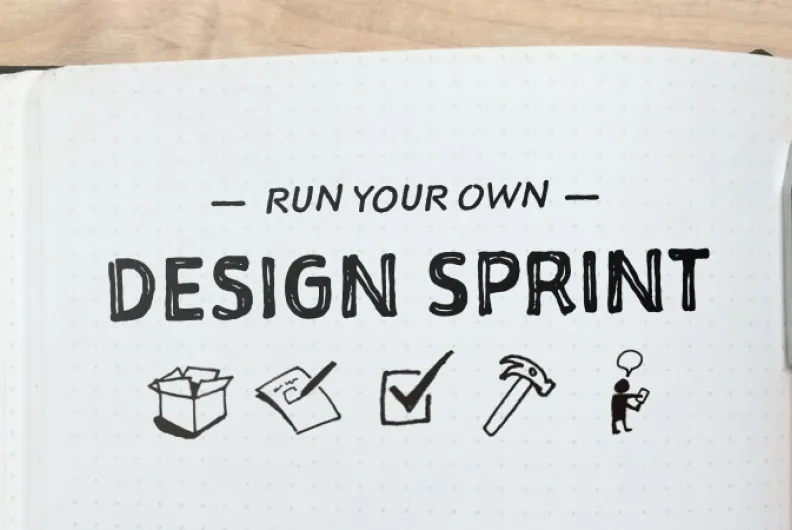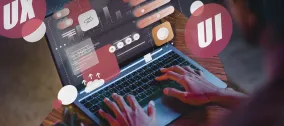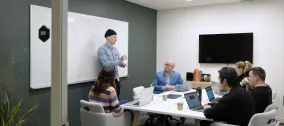Managing the Creative Process
This article was last updated in January 2022.
Inherent in the design process is the debate between subjective and objective quality. Can a design be called objectively “good” and, if so, what is it that makes it good? Or is the quality of a design entirely in the subjective eye of the beholder? However, implicit in this debate is the assumption that design is a single thing that can be viewed as a whole, rather than different elements that each play a role in the overall user experience.
Designing a new logo for a client, for example, is largely subjective. The designer can educate the client on colour theory, typefaces, and how the mark can be executed across various applications; but ultimately, the key determinant of quality is how the design makes the client and their customers feel about the brand. Conversely, designing a user interface is much more objective. Usability data should inform the initial architecture, layouts, and patterns, and then collected, analyzed, and applied in an iterative process that continually refines the evidence-based design. We can then state with a high degree of confidence that one design is better than another.
This poses a challenge when planning your design sprints. Using the examples above, what constitutes “done”? If the acceptance criteria of your user story requires a logo, then it would make sense to plan for several rounds of iteration until the client is happy with the result. But if it’s that the user can submit a form with their contact info, then “done” may simply mean that the form functions as expected. Subjecting it to subjective client feedback may place design over function to the detriment of the latter. So how can we structure the design management process to help overcome this? We must define a process that is flexible within rigid parameters.

No One Has a Monopoly on a Good Idea
Before the process of writing user stories, it’s incumbent on the client manager or project owner to draft a clear and concise client brief for the design team to review and from which to base their creative brief. In addition to listing any client requirements and desired outcomes, the brief should also define the level of innovation that’s required -- you don’t always have to reinvent the wheel, so any existing design that can be refined or repurposed will help expedite the process. This is where an effective project manager will delegate to and help guide their team leads, deferring to their subject matter expertise. As a manager, listen to everyone. No one has a monopoly on a good idea. This means that you need to listen not only to the client and what they want and think they need, but also to your team. They will all have a valuable feedback to give you that will make your work easier in the future and that will help to optimize your project. Remember that your role in the process is to always advocate on behalf of the project -- not the client, not your teams, but the best interests of the project itself. That said, never forward feedback emails. A manager’s job is to shape the needs of the client into actionable, concise directed feedback. Offer the original information if requested but still include focused feedback for the designer on top of that. They will be able to tackle the problem faster without wasting time or budget. If all that a project manager does is forward emails from the client, what role are they actually playing?
Running Successful Design Sprints
Successful design sprints are generally broken up into five phases: understand, diverge, converge, prototype, and test. And then after each sprint, design teams should use the data from their testing to iterate and evolve their designs. We’ll discuss each phase in more detail below.
Phase 1: Understand
The primary goal of the first phase is to bring the design team together, review the requirements of the project, and come to a mutual understanding so that you can explore possible solutions in the next phase. Create an agenda for this meeting and include items like reviewing research and discovery materials, goals and anti-goals, and an overview of the product and its competitors. Define the problem, and get face-to-face with personas to help focus the team’s ideas.

Phase 2: Diverge
Now that you have a clear definition of the initial problem, this next phase will explore possible solutions. We like to have our design teams make rough sketches as a group and iterate on the fly. It helps to pull out different ideas, and together the team can explore different directions to take them and determine what will be the optimal solution. Again, create an agenda for this meeting and include items like brainstorming ideas, sketching activities, mind mapping, story boarding, and journey mapping. Then, think and critique as a team. Continue this process until a potential solution has been agreed to and its direction refined.
Phase 3: Converge
This phase puts design teams in the middle of the sprint. The problems are understood and potential solutions have been generated, so now it’s time to converge on all the information and select an actual solution that will be documented as either a wireframe, mockup, or prototype. Work in this phase generally focuses on wireframing and prototyping. With a well-established design team, it’s generally best to have them sketch a wireframe and engage in a “ritual dissent.” This cycle of sketch → dissent → sketch → dissent is an internal iteration that the team proceeds through before any work is presented to the client.
When sketching, break the design team out into smaller groups and divide up the user journeys. At this early stage, we like to keep the process lo-fi and put pen to paper. Only after the ritual dissent and subsequent iterations do we move to a digital wireframing tool like Omnigraffle or, even better, Axure, which lets you wireframe and then bring the fidelity up to a prototype level. Once the sketches are done, we engage in the process of ritual dissent and force the groups to tear apart and dissect their ideas.
Each group on the team will have a lead who presents the sketches on their behalf, then the other groups break them down, identify any holes or gaps, and critique the ideas. This process continues until each group has presented to the team, and each idea has been broken down. This forces teams to remove any feeling of ownership or personal attachment and allows fresh perspectives to inform each idea before they’re further refined and presented to the client.
Phase 4: Prototype
The team’s solution is almost ready to present to the client. Using the sketches, wireframes, and/or storyboards, create a basic but functioning prototype (as opposed to a static mockup). Because content-informed UX is pivotal to solutions, a prototype will better help you visualize how your solution will function as you engage with the interactions without having to commit time or budget to development. Prototypes are living versions of your solutions. Again, we recommend Axure for prototyping. It’s a tool that can transcend most design phases within a sprint, from lo-fi wireframes and mockups to prototypes. Our clients love it too because it helps our design teams present a deliverable that’s polished and professional, which reinforces their confidence in our team.
Phase 5: Test
Finally, test the solution before you present it to the client -- something that should be a must, but sometimes becomes a luxury when budgets are thin. This is another benefit of a prototype versus a static mockup, as it allows for more comprehensive usability testing.

A Taxonomy of Design Types
It’s incumbent on the agency to educate clients on the difference between subjective and objective design, and the values of each. Crafting clear and concise user stories that explain which parts of the design would benefit from subjective feedback and which are best left to data-driven iterations will help non-designers. Also, consider drafting a provisional taxonomy of design types and starting the conversation about which will benefit from subjective and objective feedback early on in your process. We like this example from Pivotal, from most subjective to most objective:
- Corporate/Brand Identity Design – “How should we design our brand?”
- Product Design – “What problem should we try to solve?”
- Visual Design – “Does this color scheme effectively direct the user’s attention?”
- User Experience Design – “Is this product a compelling way for users to accomplish their goal?”
- Visual Interaction Design and User Interface – “Does this design help the user do what they need to do?”
Finally, don’t hide your creative teams from the client. Always allow your leads to be in meetings and have a voice. Strategy and learning come from being in meetings and collaborating with the team and clients. The designer is going to be translating the problem into a solution and should be treated accordingly and they’re in the best position to translate and sell any subjective design.







